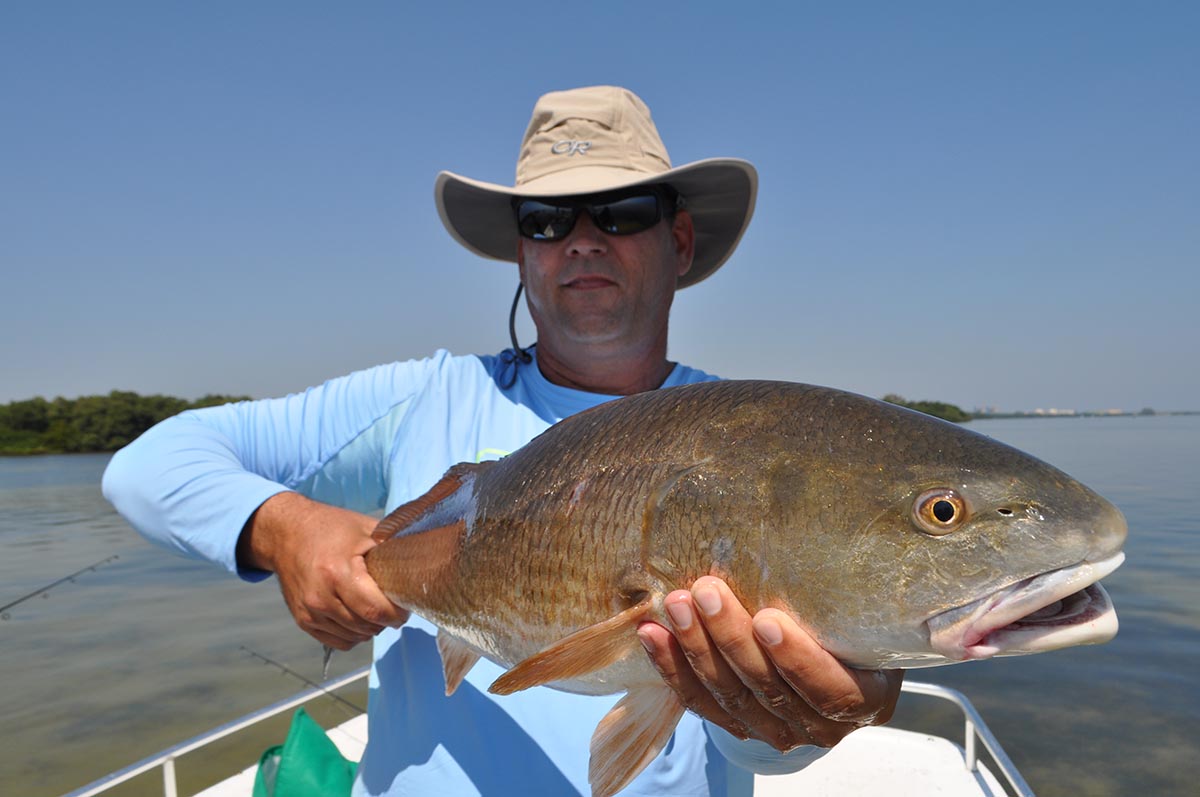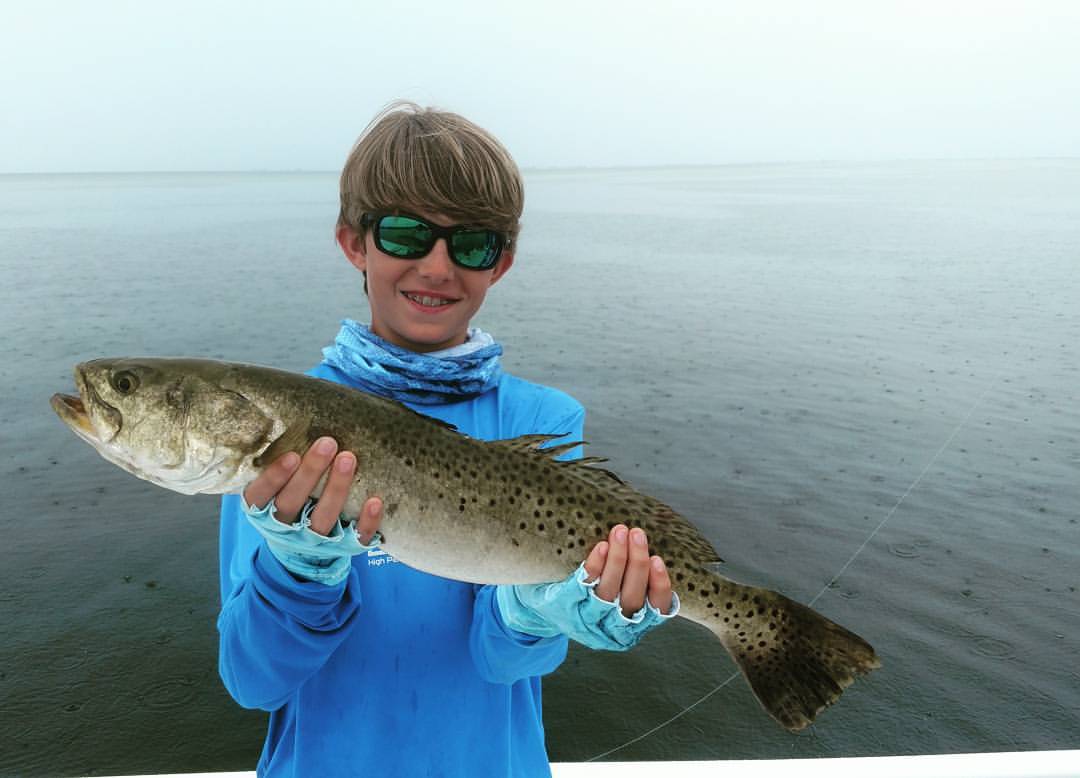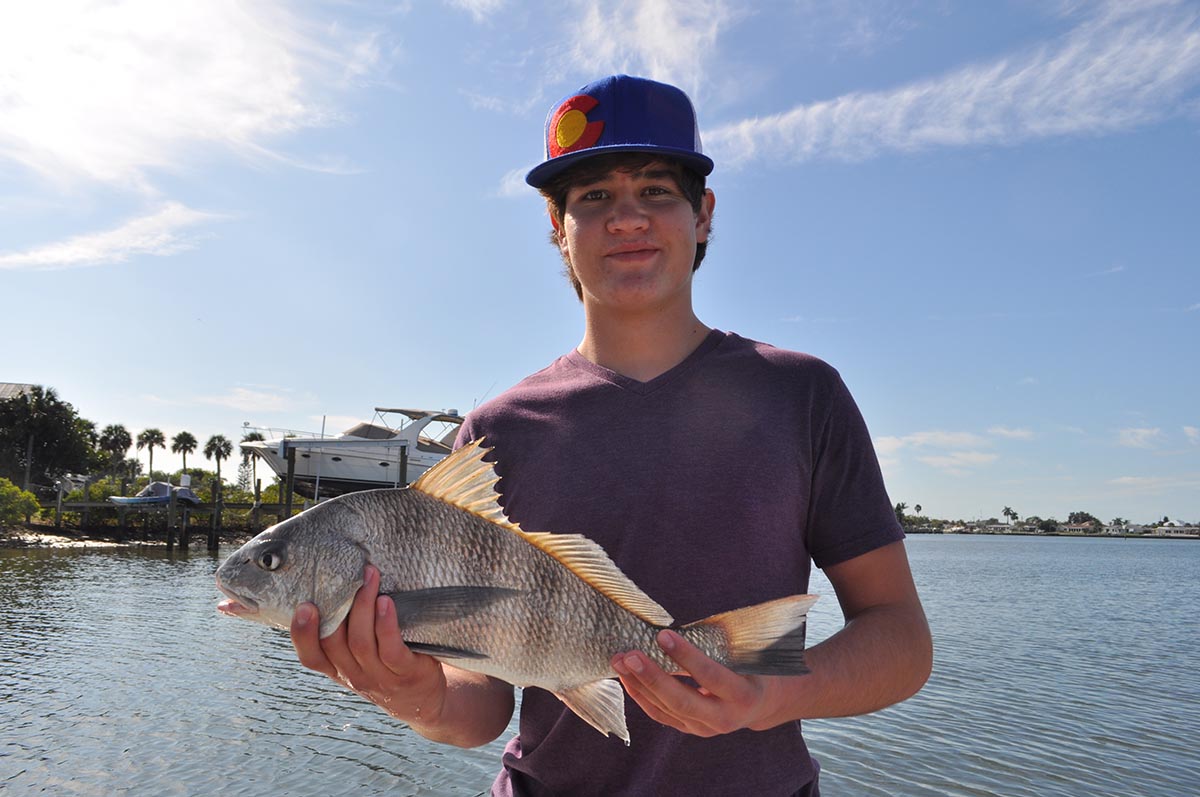Last Updated on February 7, 2018 by Staff Writer
While Tampa Bay is a huge body of water located off the coast of Tampa, Florida that incorporates deep water channels, backcountry mangrove systems, and an expansive nearshore fishery – sight fishing the flats of Tampa is one of the most popular activities for both resident and visiting anglers. Aquated to more like hunting, sight fishing (as the name implies) is the act of searching for your target visually among the shallow water grass beds and mud flats. Once spotted, the boat is usually poled into position and an angler on the bow makes a presentation to the fish. But, there are some more details to this process that can make or break your next sight fishing excursion. Let’s cover some basics.
Finding Your Target
Feeding Fish
There are three primary ways to locate fish on the flats. We’ll start with the most obvious – feeding. Mostly occurring during the warmer months when bait pods find their way onto the Tampa flats, frenzied attacks can be witnessed. In these, it is not uncommon to find various different species of fish taking part in the action. These explosions are fairly easy to spot and presenting to them can be just as easy.
The Push
Next, and what most sight fishermen find themselves doing, is looking for “the push”. A push is referencing the water waking over the head or body of a moving fish in shallow water. Most flats fisherman will position themselves within distance to lead the fish with a cast in its direction of travel and then present a bait ahead of it. In this process, the fisherman waits until the fish is in just the right position and begins to work the bait in a way to cross paths with the pushing fish.
Another aspect to working pushes is that, with some experience, the push itself will tell you if the fish is a gamefish species or perhaps just some mullet. It is a general rule of them that solid straight line pushes will come from gamefish, while smaller erratic pushes would be things like mullet. After some years, some sight fisherman even find themselves positively identifying the fish in this way. This is due to the fact that they each have slightly different swim characteristics.
Laid Up Fish
Finally, laid up fish. Laid up fish refers to fish in a fixed position usually lying on the bottom but in any case – not swimming/moving. For new anglers, and even some seasoned ones, differentiating a laid up fish from something as simple as a rock on the bottom can be hard. This will also greatly depend on the conditions present at the time. Even if spotted correctly, a lot of times laid up fish can be finicky to move and can spook easily. So with practice, anglers learn to bring their presentations in gently, keep a safe distance from the fish, but also provide just enough action within its line of sight to entice it to move in and strike.
Sight Fishing Presentations
The Cast
Arguably one of the most important aspects of sight fishing the Tampa flats is the cast. Finding fish is one thing, but getting your bait in the right place at the right time involves accuracy and good distance judgment. This is true on both spin tackle and fly gear. Most Tampa fishing guides will tell you to practice your accuracy before your trip with them, even more so than distance. Properly leading a fish on the flats and the placement will make or break your connection with that fish. Distance to lead and how far out from the fish will be dictated by species, what they are doing, and experience. Nothing will replace those. Of course with a fishing guide, he will do that calculation for you if required, and usually, give you a direction and distance. Bringing back the point that accuracy and your measurement of distance should be on point primarily. This is what to practice when you are first starting out.
The Presentation of Baits or Flies
This is another item of finesse that must be learned solely through experience. But some simple rules are to match the action of what the fish are eating. If its the middle of summer and baitfish are abundant, then that will determine your bait pattern choice as well as the action. Erratic movement of a worried baitfish may be in order, for instance. In the winter, when species like redfish switch over to a crustacean diet – matching that movement will be our primary goal. This would be more along the lines of slowly working the bottom, slight bumps up, and flutter back down – move slow. After some time on the flats, you will begin to see these patterns and be able to apply what has worked for you in your own style of presentation. You will then now be well on your way to becoming an excellent Tampa sight fisherman.
Final Tips for Sight Fishing in Tampa
Ever heard the saying that “silence is golden”, well this is a primary rule of thumb on the flats of Tampa, especially on glass calm days. Noise can be your greatest enemy whether it be bumping gear around the deck, loud music, or excessively loud talking – these can all warn a fish of your presence long before you ever see it.
Good sunglasses are key. Breaking through the surface of the water with your vision is another key component. Great sunglasses can literally give you “x-ray” vision on the flats. This is sight fishing after all.
Keeping the sun and wind to your back will work for you two-fold. One is that the sun is not affecting your vision in any way. Second, the boat is easier to push and maneuver along the flats when the wind is coming from the back.
Keep an assortment of baits at the ready. The flats can change from day to day, and being able to switch up to what is working at the moment is going to be an integral part of your experience. For light tackle, you may want to bring things like suspending twitch baits, swim baits, topwater lures, soft plastic paddle tails/shrimp/crabs, and so on. Fly guys same for you – patterns and flies that work different areas of the water column.
Light action rods with some length are also a great choice, these allow for long distance casts when coupled with a small diameter mainline. Leader choice is up to you, but the less visible the better. You are working shallow and the sun is breaking right through that whole water column. Usually somewhere between 12lb and 25lb leaders are what is called for to have on hand. Lighter leaders will result in more strikes, bigger leaders will result in more landings – experiment and find your groove.
Want to get guided by a pro on your next Tampa sight fishing trip? Give us a shout.




